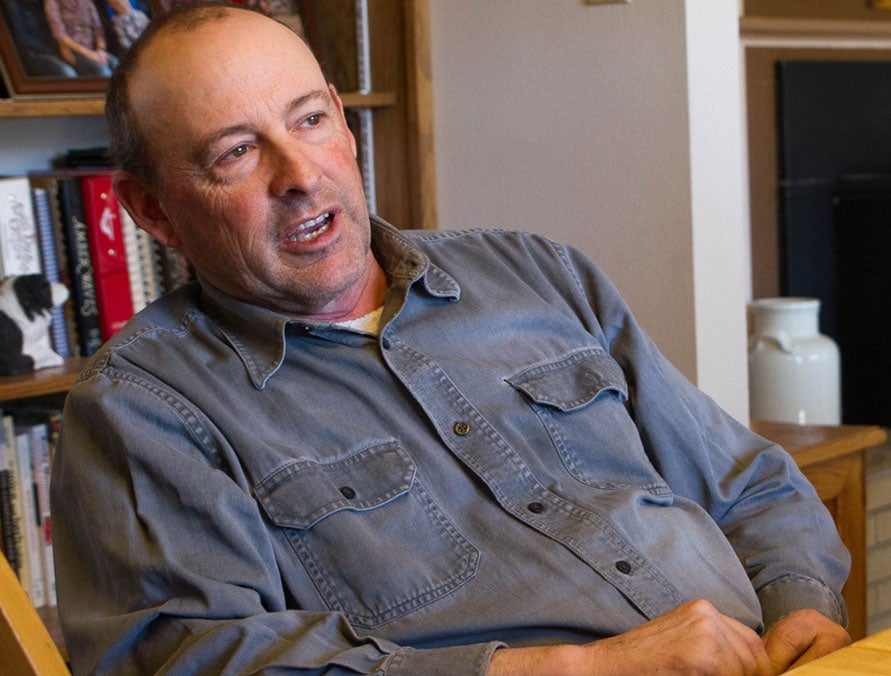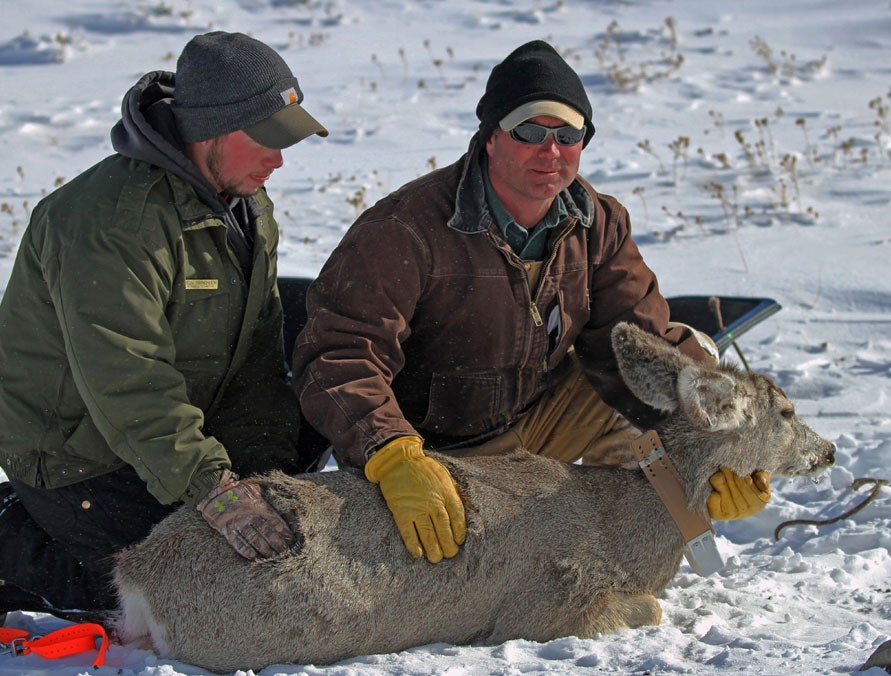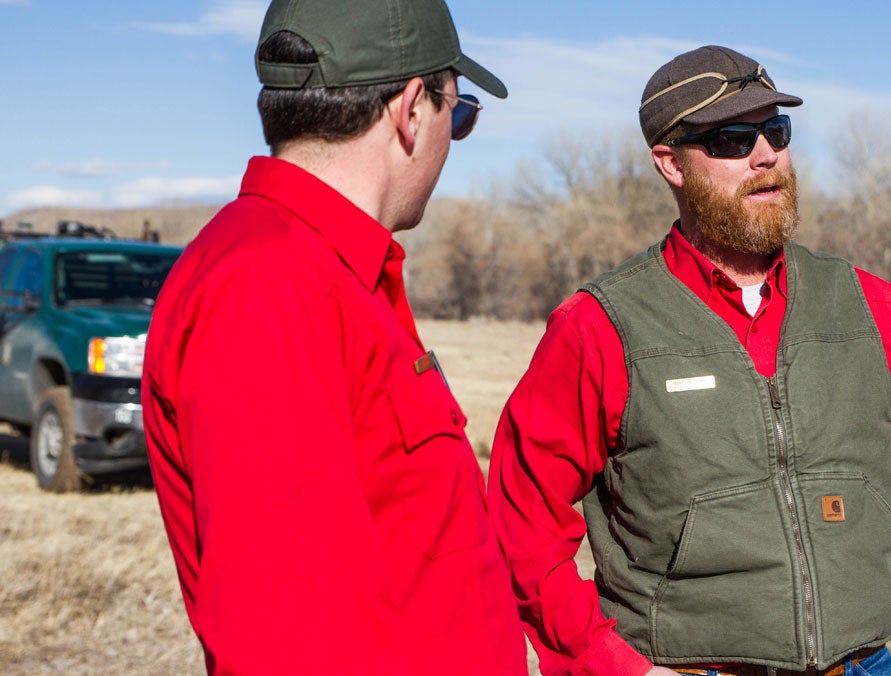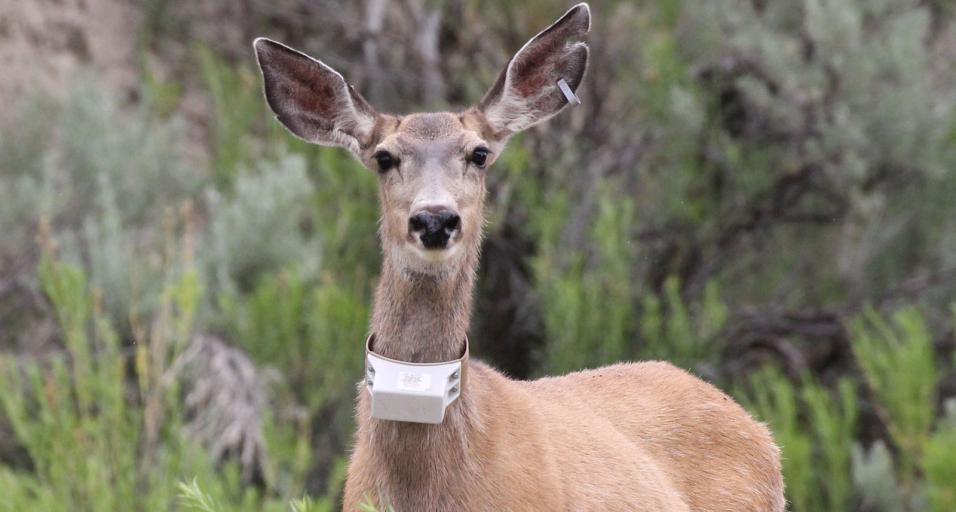The Laramie Range in southeastern Wyoming exists in the shadow of nearby mountain ranges; the Rockies to the south, the Bighorns to the north and the Tetons to the west all have regional, if not global, reputations. Yet there is an incredible beauty in the granite outcroppings and abundant wildlife found in the Laramie Range.
Ken Small’s family homesteaded on the eastern lee of the range in 1902. He and his wife Patty live on the land his great-grandfather bought in 1907. Their son is now the fifth generation of Smalls to ranch here.
Sitting around the family kitchen table, Patty reflects on the ranch’s surroundings. “We have wilder places than other spots you’ll find west of here.”
The Smalls know of places that few humans ever visit and the family has a deep connection to the land and the wildlife they share it with. The artwork in their living room showcases mule deer and elk, animals that can also be spotted out the window.
“We enjoy seeing them. It’s part of our quality of life,” Patty says.
Ken grew up hunting here. He still kills an elk every year to add to the freezer, though he gave up deer hunting a couple decades ago. The ranch also gets a small financial boost from allowing outfitters to guide on the land.
“Some of the people who hunt our ranch say they’d rather do that than to go Disneyland,” Patty says.
The ranch is home to crucial winter habitat for mule deer, elk and pronghorn. However, Ken points out the mule deer have been hard hit during his lifetime.
“They were thick in here when I was a kid. Had them in our alfalfa fields and it drove my dad nuts,” he says, calling the 1980s the glory days of mule deer. Since then the population has gone down significantly.
The 1980s happen to be when chronic wasting disease was first discovered in Wyoming. The first wild elk that tested positive in the state was found just down the road from the Smalls’ ranch. Attuned to the land, Ken and Patty could tell when the disease arrived.
“It seemed like all of a sudden the deer weren’t there,” Ken says, remembering back to the late ’80s when a wave of death seemed to ripple across the land. Known commonly as CWD, the disease is always fatal and transmittable among deer, elk and moose. To date, it’s been documented in 25 states across the U.S.
Here in the Laramie Range, the population estimate for the local deer herd was approximately a third higher in the 1980s than it is today. A lot of factors may be at play. Elk from Yellowstone National Park were reintroduced here in 1962, two years before Ken was born. They have thrived, competing with deer for habitat and food. Ken believes predators are impacting mule deer numbers, too. And, of course, there’s the impact of weather — from drought to bad winters. Yet Ken believes CWD has also taken its toll.
“It’s definitely a threat to deer,” he says.

Defining the threat
CWD is unique in the wildlife world. It belongs to the group of rare diseases called transmissible spongiform encephalopathies. The disorder is caused by abnormal proteins called prions that attack the brains of infected deer, elk or moose and it is 100 percent fatal.
Martin Hicks grew up in Wheatland and moved back to his hometown 15 years ago to become the district Game and Fish wildlife biologist. Hicks first heard about CWD when he was a freshman in college in the early 1990s.
“We were scared to death of this disease that would kill all the deer,” he says.
By the early 2000s, Hicks says it felt like the sky was falling — the public was unsure about how CWD might affect humans, livestock and even dogs. Game and Fish ramped up efforts to test hundreds of hunter harvested deer and elk for CWD to try to understand it better. Throughout the world there was very little research available at that time and rumors were rampant.
CWD has never been found in people or cattle. Hicks and others noticed that concern about it has waned since the early 2000s. But interest and fears flared last year when a study in its early stages, which has yet to be peer reviewed, showed CWD had been transferred to a primate study subject — a macaque.
The Centers for Disease Control statement on the disease reads: “To date, there have been no reported cases of CWD infection in people. However, animal studies suggest CWD poses a risk to some types of non-human primates, like monkeys, that eat meat from CWD-infected animals or come in contact with brain or body fluids from infected deer or elk. These studies raise concerns that there may also be a risk to people.”
The Centers for Disease Control recommendation, which is supported by Game and Fish, is that hunters get their deer, elk and moose tested if it was shot in a hunt area where CWD is present, and to not eat the meat if it tests positive.
But to date, no statistics suggest a higher incidence of human brain maladies in areas of high CWD prevalence. Even though human health concerns have always outweighed those related deer, elk and moose health, the threat to deer is something that Hicks says could be devastating in its own right.
“To lose a deer herd, it would be not only economically but socially significant,” he says. “Wildlife is why we live here.”
The potential loss of a whole herd to CWD seemed unfathomable until a few years ago. But, after the fears about human health abated, Game and Fish biologists and others began focusing on deer health. About a decade ago Justin Binfet, the Game and Fish wildlife management coordinator in Casper and former Douglas wildlife biologist, started noticing something peculiar happening with the South Converse mule deer herd that inhabits Hunt Area 65 in the northern Laramie Range, just south of Douglas.
“While mule deer across North America were in decline since the 1990s, they appeared to decline even more dramatically in the South Converse herd,” he says. “During this timeframe, one of the biggest contributing factors to widespread mule deer decline was relatively poor fawn production and survival. This was especially the case in the South Converse herd, where fawn production declined more than in adjacent herds that experienced the same environmental conditions.”
At the same time CWD prevalence was spiking in the herd, up to 50 percent of the deer sampled tested positive. This may have been the highest prevalence for any herd, anywhere.
“That’s when we started asking questions,” Binfet says.
Those questions led to a collaboration with the University of Wyoming, doctoral student Melia DeVivo and other researchers. The groundbreaking project followed the South Converse herd over multiple years. More than 150 deer were collared and tracked.
“For the first time we were able to document survival rates of adult female mule deer and survival rates in relation to CWD status,” Binfet says. The study also looked at why deer were dying, movement patterns, home range size, fawn production and survival. It then related all those things to CWD status and whether the deer tested positive or negative. The study was published in late 2017.
“It was somewhat headline grabbing because some of DeVivo’s models predicted, in the face of high prevalence of CWD combined with survival and reproduction rates, some fairly dire scenarios are possible. Those ranged from population extinction to population persistence at a very low level over the long term,” Binfet says.
Other models DeVivo formed from the research showed negative impacts on herds that were less drastic. Also, the research overlapped with a tougher winter and some extreme drought, both of which can impact mule deer survival. Since the study concluded, precipitation has been above normal, meaning deer have more forage, winters have been mild and the South Converse herd numbers have actually increased. Binfet says despite short-term gains, CWD will likely remain a significant threat to this population, as was borne out by the research.

The endemic area
The focus on CWD has intensified around Douglas and Wheatland because the disease has been here for 30-plus years. It’s also where the prevalence is highest in the state. Elk are also impacted by CWD, but it is not as widespread in elk at this time.
Mary Wood, the Game and Fish wildlife veterinarian says deer appear to be the drivers that spread the disease in Wyoming and across the continent.
Unfortunately, there is no proven way to stop the spread of CWD or eradicate it once it becomes established; and in Wyoming it was established before researchers even knew it existed.
“There is currently no known treatment or cure for CWD. Scientists have been working to find a vaccine for this disease, but they just haven’t been successful yet,” Wood says. She adds that the prion can also live in the environment, so it’s not enough to just cure sick deer. And to complicate matters further, animals with the disease don’t look sick until nearing the end of their lives.
Jeremy Johnson learned this firsthand. Born and raised in Douglas, by his late teens he was already an avid hunter when he spotted a big buck deer with non-typical antlers. He spent days stalking it, but before he could find the buck it keeled over dead.
“That’s the first time I paid attention. I chased him for two weeks and then he just laid down and died. Kind of heartbreaking that a big deer like that would just lay down and die,” he says.
The local game warden hauled the deer off for testing and later confirmed it died of CWD.
Since then, Johnson said he’s seen deer numbers drop in the herds around Douglas and knows CWD is playing a big role. It is now a topic of conversation at kitchen tables when it never was before.
“When you are thinking about where to hunt and the push to not eat it if it tests positive, it is a conversation now, it’s a centerpiece,” Johnson says.
He says he’s personally not worried about human health implications, but he is worried about what is happening to the local deer herds and hunting in general.
“I know that the motels and restaurants used to rely on the deer hunting during the fall period. The numbers of hunters coming here is way down. It’s all from deer numbers being down,” he says. “That’s not all because of CWD, but it’s affected Douglas. I know it has.”
For Game and Fish, working to figure out how to slow CWD’s march will take the support of hunters like Johnson and many others who pay attention to the local landscape.
That’s because there is no silver bullet, no cure. There are only ideas of what might have a positive impact. And there are new ideas percolating. The Western Association of Fish and Wildlife Agencies just released recommendations for adaptive management of CWD. Wood, Wyoming’s wildlife veterinarian, helped researchers from universities and other state agencies develop these recommendations and says they are solid ideas based on 30 years of research.
“I think it is easy to look at the situation with CWD and feel like maybe there is nothing we actually can do. It’s easy to look at it and feel like it’s hopeless,” she says. “But I believe there is always something we can do. Maybe we don’t have the absolute answer, maybe there isn’t a clear answer, but that doesn’t mean there is nothing we can do. We aren’t going to eradicate this disease any time soon, but can we learn how to manage it? Can we limit it’s impact? Can we buy ourselves some time until, perhaps, we do have more options?”
In the past year alone, CWD was found for the first time in wild deer in Montana and Mississippi, bringing the tally up to half of the states in the country. Those who care about deer, elk and moose — in Wyoming’s borders and beyond — know Wood’s questions are ones that will be wrestled with for years to come. —Renny MacKay is the communications director for the Wyoming Game and Fish Department. This is his first story for Wyoming Wildlife.


